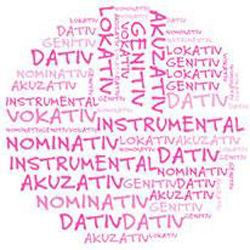The plural noun endings in the instrumental are identical to those in the dative and locative, and the rules on when to use the instrumental are very straightforward.
The instrumental case is most commonly used in three different situations:
When is the instrumental case used in Croatian?
To denote the tool or means used to accomplish an action
i.e. when referring to the instrument being used, hence the name!
Idem na posao autobusom. – I travel to work by bus.
To state company (similar to with in English)
i.e. who we’re doing something with
Idem u kino s mamom. – I’m going to the cinema with my mom.
To refer to the unity of two entities
i.e. when referring to one thing combined with another
Pijem kavu s mlijekom. – I’m drinking a coffee with milk.
Regular noun endings in the instrumental case
| | | Muški rod
(masculine) | Ženski rod
(feminine) | Srednji rod
(neutrum) |
|---|
Jednina
(singular) |
Nominativ |
–
prozor (window)
susjed (neighbour)
miš (mouse) |
–a
stolica (chair)
mačka (cat) |
–e/o
stablo (tree)
kazalište (theatre) |
| Instrumental |
–om
prozorom
susjedom
Note: Masculine nouns which end with a palatal consonant (č, ć, đ, dž, š, ž, lj, nj, j, št) receive the ending –em, e.g.:
mišem |
–om
stolicom
mačkom |
–om
stablom
Note: Neutral nouns which end with a palatal consonant (č, ć, đ, dž, š, ž, lj, nj, j, št…) receive the ending –em, e.g.:
kazalištem |
Množina
(plural) |
Nominativ |
–i
prozori
susjedi |
–e
stolice
mačke |
–a
stabla
kazališta |
| Instrumental |
–ima
prozorima
susjedima |
–ama
stolicama
mačkama |
–ima
stablima
kazalištima |
| |
|
|
|
|
Exception: Certain feminine nouns ending in –i
Some feminine nouns which end in a consonant receive the ending –i in the instrumental singular. Here are a few common examples:
| Nominative singular | | Instrumental singular | |
|---|
| bolest |
|
bolesti |
sickness |
| smrt |
|
smrti |
death |
| obitelj |
|
obitelji |
family |
| ljubav |
|
ljubavi |
love |
| |
|
|
|
Instrumental without prepositions
You probably noticed that two of these sentences above use the preposition and one doesn’t. When the instrumental is used in the context of explaining a tool or the means used to accomplish an action, there’s no preposition necessary.
- Pišem olovkom. – I’m writing with a pencil.
- Putujem zrakoplovom. – I’m travelling by plane.
- Jedem štapićima. – I’m eating with chopsticks.
Instrumental with prepositions
The instrumental case is used with several prepositions, but the most common is s (meaning “with”) or its variation sa which is used when the following word begin with letters s, š, z or ž. The prepositions s and sa are used when:
Talking about company:
- Putujem s Majom. – I’m travelling with Maja.
- Idem na posao s mužem. – I’m going to work with my husband.
- Igram tenis sa ženom. – I’m playing tennis with my wife.
Talking about the unity of two entities:
- Jedem sendvič sa šunkom i sirom. – I’m eating a sandwich with ham and cheese.
- Gledam ženu sa šeširom. – I’m watching the woman with a hat.
- Volim jagode sa šlagom. – I like strawberries with cream.
The preposition s is always pronounced as one with the following word, e.g. smamom (s mamom), smužem (smužem).
If you find these rules about then to and when not to use the preposition s confusing, don’t worry! Most Croatians find them confusing too, and many people use the same preposition in all three situations ...
Test your knowledge of the instrumental case!
Below you'll find a series of instrumental grammar questions for you to test yourself on. If you enjoy the quiz, take a look at our grammar trainer page and test yourself on different cases and tenses!
Pišem domaću zadaću (prijatelj).
0 questions answered
0 correct answers
0 incorrect answers
10 words remaining






